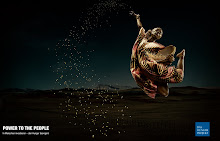For most of Jamaica's history, traditional dances from Europe and Africa
have been part of feast celebrations and life-affirming rituals. The best
European example of this style of dancing is the Morris dance, brought to
Jamaica by indentured servants from England, Scotland, and Ireland.
Strong similarities among early folk dances make it difficult to dissect
characteristics and determine their origins. For example, both African and
European forms had all-male dancers, and some men dressed as animals.
It's impossible to determine which dance was more important in creating
this tradition.
Since the mid-1900s, dance in a performance setting has been developing.
Although at first, dance was taught only to light-skinned islanders, one
Jamaican girl, Hazel Johnston, would change all that. Johnston went to
England to learn music and returned to Jamaica to become the first dancer
to build her own studio – no one would rent studio space to her. She began
working toward dance theater based on Jamaica's own culture.
Johnston never saw her dream come to fruition because she died young.
But Ivy Baxter, a student of Johnston's, managed to fuse classical styles
and Jamaican folk dances. She founded the Ivy Baxter Creative Dance
Group in 1950. Rex Nettleford joined this group, as did Eddy Thomas.
The group began teaching summer courses in dance at the University of
the West Indies, where Nettleford taught.
Upon Jamaica's independence in 1962, a production known as "Roots and
Rhythms" was choreographed by Baxter, Nettleford, and Thomas. They
formed the National Dance Theatre Company soon afterward, led by
Nettleford and Thomas. They perform annually in July or August in
Jamaica but spend time touring as well, despite being an all-volunteer group.
Over time, nearly 40 distinctive dances have been identified, but there are
seven main styles that Jamaican dances fall into: Maroon, Myal, Kumina,
Revival, Rastafari, Jonkonnu, and Hosay. All but Jonkonnu and Hosay are
considered to be religious dances, while the others are secular. Jonkonnu
dances still exist today, as does the Revival dance style of Pukkumina.
More to come...


Keine Kommentare:
Kommentar veröffentlichen